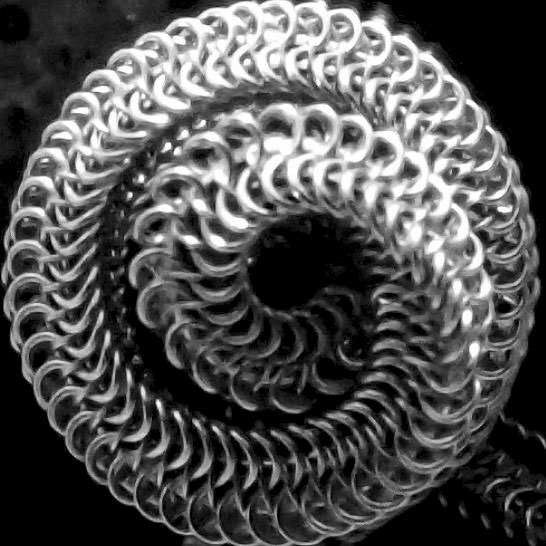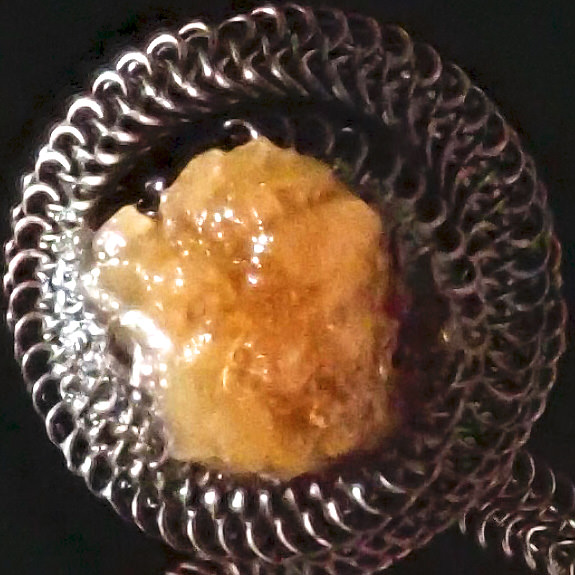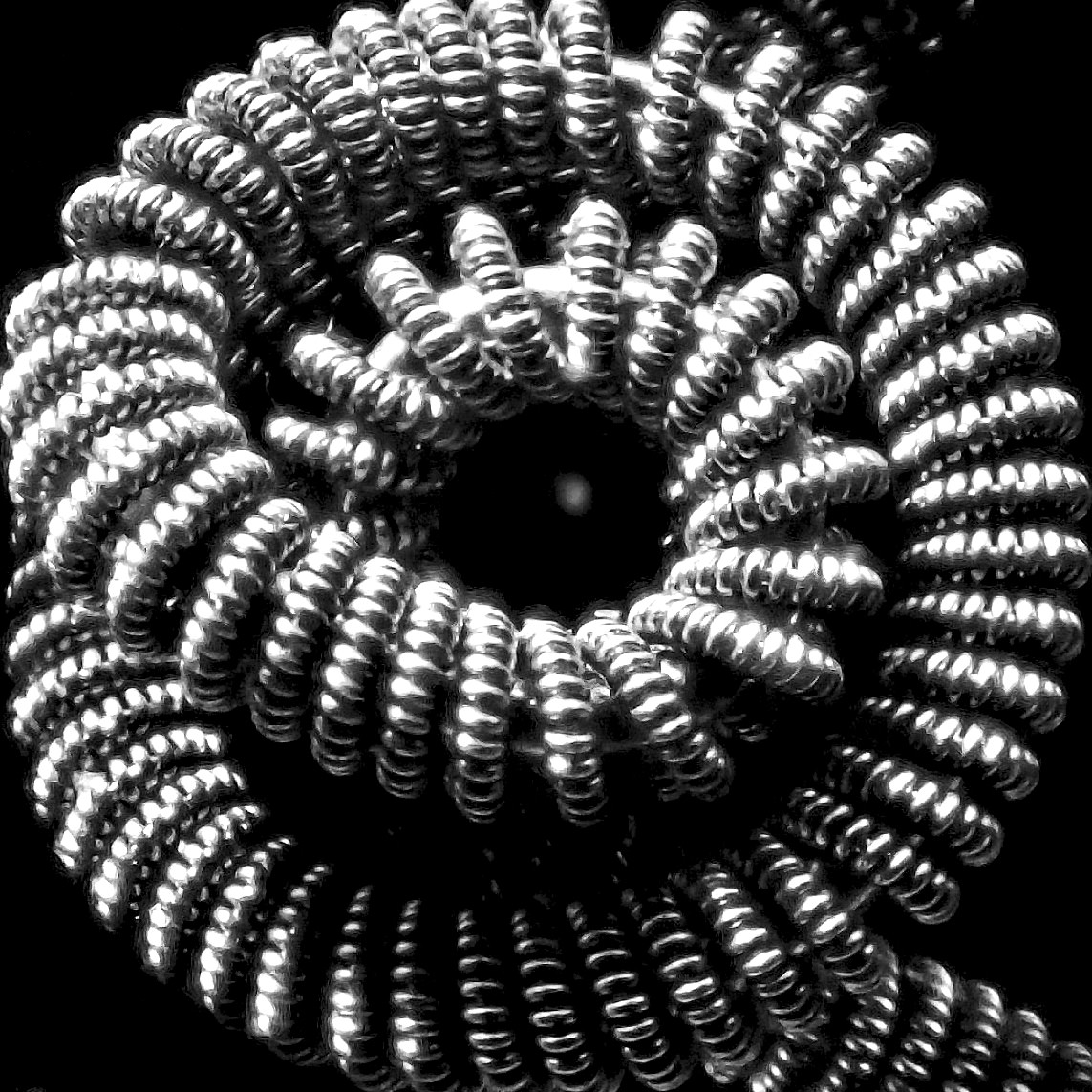Idea for this thread came from a conversation with @2clicker about the merits of stainless steel wire e-cig coils for dabbing. Prior to using this method, dabbed from a SiC HALO D-nail and glass which now sits unused. Flavor and effects with wire coils are similar to a temperature regulated dab, and it's portable.
Interest in learning or discussing?
Eye candy, the new coil. Typically build one before each session. (That's completely unnecessary and probably pathological - they can be cleaned ultrasonically between sessions.)

A stitched, Mohawk alien inception coil. Just learning the whimsical art of wire building.
To build this wire, three 26G stainless steel core wires, arranged in a pyramid, are "claptoned" with a 36G wire (thinner). Claptoning wraps one wire around another, using a drill, to give the appearance of a guitar string (hence, "Clapton"). This one doesn't look like a guitar string because the cores aren't wrapped with straight wire. Instead, they're wrapped with a long, thin, stretched coil (like a spring or Slinky) made by slipping the core from a regular clapton. Wrapping with this gives the wavy appearance characteristic of "alien" builds. If you look closely, you'll notice one more feature - a 40G wire binding each wave to the core. This is the "stitch", made by threading 40G wire through the 36G clapton that you've just slipped the core from. This makes the wire easier to wrap into the triangular, spiked "Mohawk" pattern (and looks cool).
The effect is to dramatically increase surface area without increasing resistance. Negligible current flows through the thin clapton and stitch wires, but these heat almost as hot as the cores by conduction. Any thirsty wire will do, like regular and "staggered" claptons as well as braided wire, which are available prebuilt.
Once a few inches of wire are wrapped, it's time to wrap an inception coil. But that's a story for another post. The coil above is only 7mm in diameter.
Interest in learning or discussing?
Eye candy, the new coil. Typically build one before each session. (That's completely unnecessary and probably pathological - they can be cleaned ultrasonically between sessions.)

A stitched, Mohawk alien inception coil. Just learning the whimsical art of wire building.
To build this wire, three 26G stainless steel core wires, arranged in a pyramid, are "claptoned" with a 36G wire (thinner). Claptoning wraps one wire around another, using a drill, to give the appearance of a guitar string (hence, "Clapton"). This one doesn't look like a guitar string because the cores aren't wrapped with straight wire. Instead, they're wrapped with a long, thin, stretched coil (like a spring or Slinky) made by slipping the core from a regular clapton. Wrapping with this gives the wavy appearance characteristic of "alien" builds. If you look closely, you'll notice one more feature - a 40G wire binding each wave to the core. This is the "stitch", made by threading 40G wire through the 36G clapton that you've just slipped the core from. This makes the wire easier to wrap into the triangular, spiked "Mohawk" pattern (and looks cool).
The effect is to dramatically increase surface area without increasing resistance. Negligible current flows through the thin clapton and stitch wires, but these heat almost as hot as the cores by conduction. Any thirsty wire will do, like regular and "staggered" claptons as well as braided wire, which are available prebuilt.
Once a few inches of wire are wrapped, it's time to wrap an inception coil. But that's a story for another post. The coil above is only 7mm in diameter.






